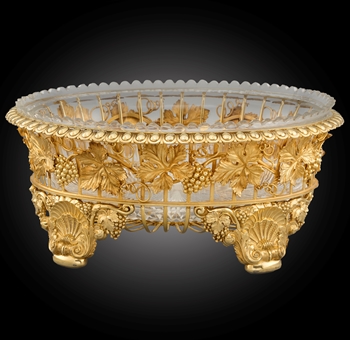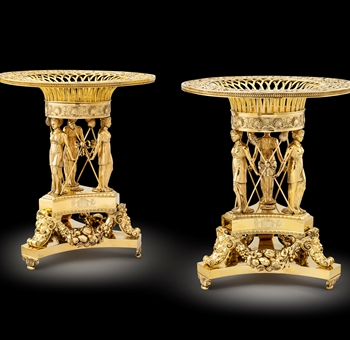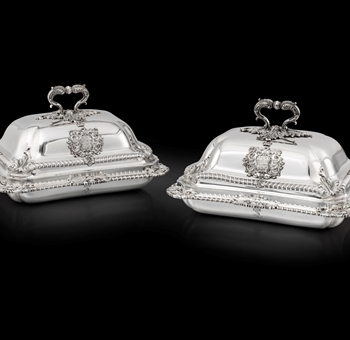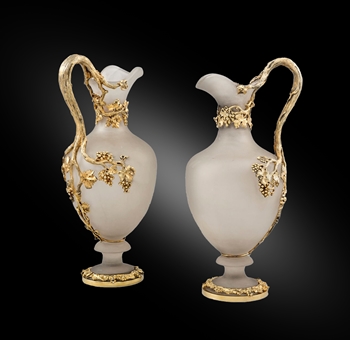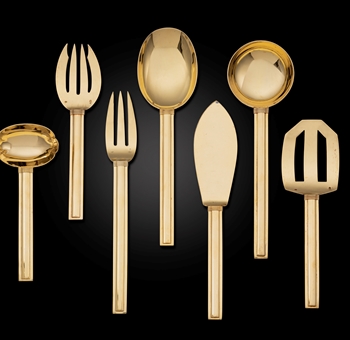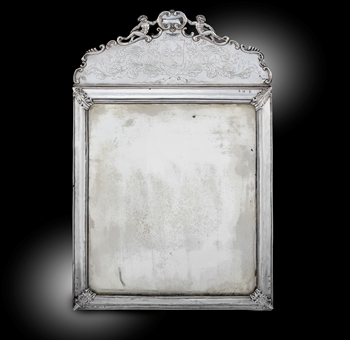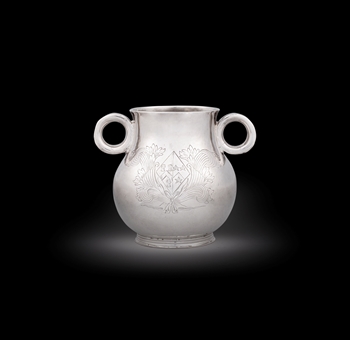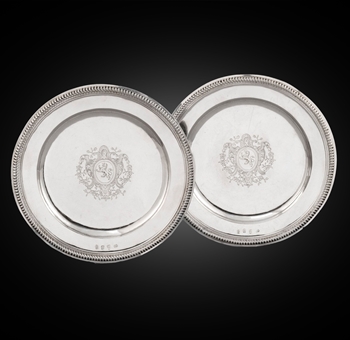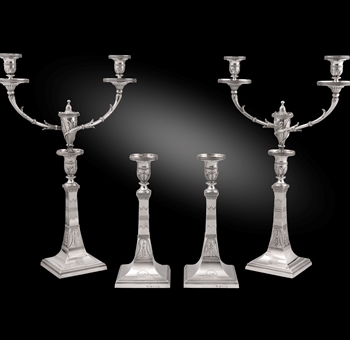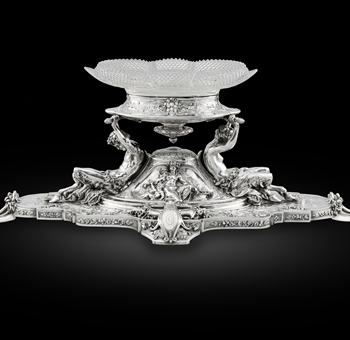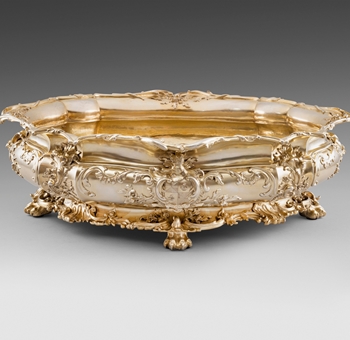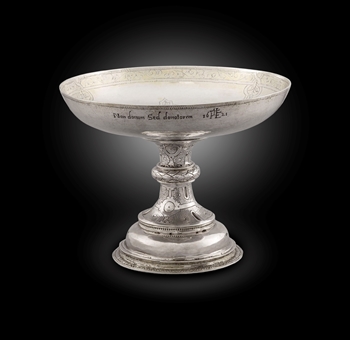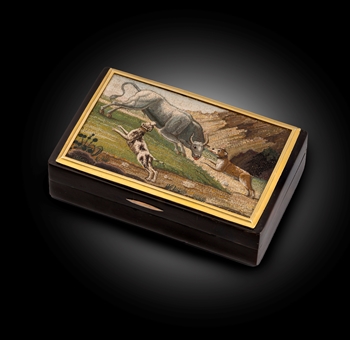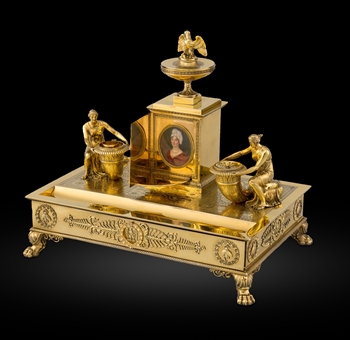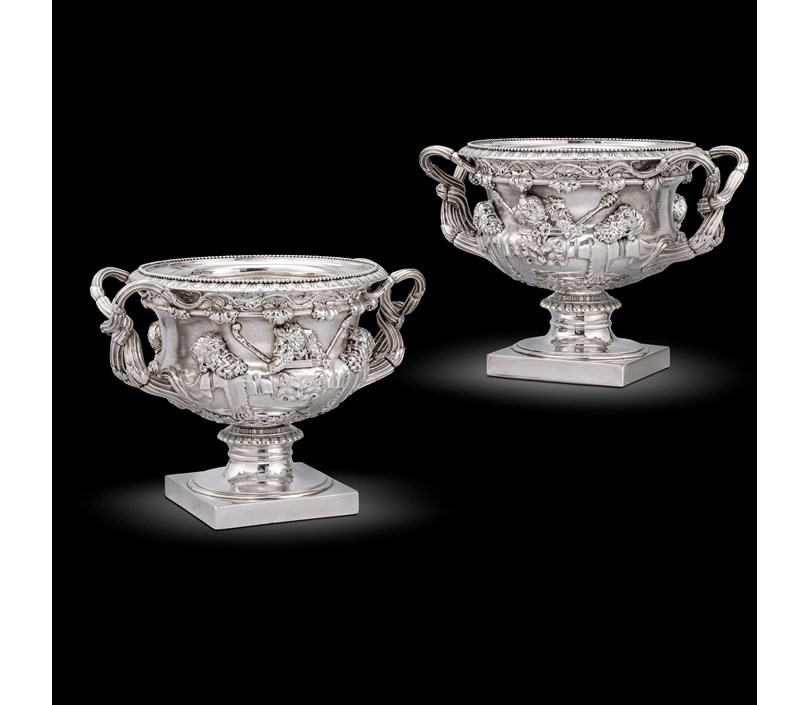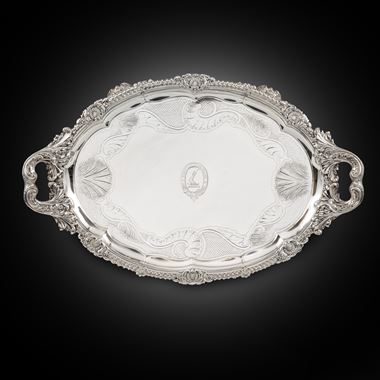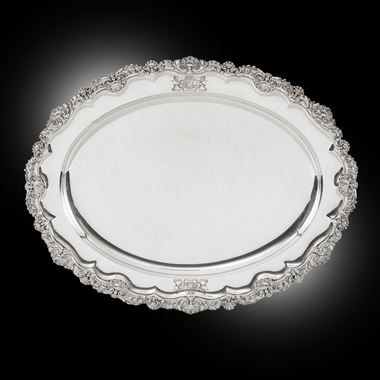The Warwick vase
The Warwick Vase is an ancient Roman marble vase with Bacchic ornament that was discovered at Hadrian's Villa, Tivoli about 1771 by Gavin Hamilton, a Scottish painter-antiquarian and art dealer in Rome, and is now in the Burrell Collection near Glasgow in Scotland.
The vase was found in the silt of a marshy pond at the low point of the villa's extensive grounds, where Hamilton had obtained excavation rights and proceeded to drain the area. Hamilton sold the fragments to Sir William Hamilton, British envoy at the court of Naples from whose well-known collection it passed to his nephew George Greville, 2nd Earl of Warwick, where it caused a sensation.
Restoration of the Vase
The design and much of the ornament is Roman, of the second century CE, but the extent to which the fragments were restored and completed after its discovery, to render it a fit object for a connoisseur's purchase, may be judged from Sir William Hamilton's own remark
"I was obliged to cut a block of marble at Carrara to repair it, which has been hollowed out & the fragments fixed on it, by which means the vase is as firm & entire as the day it was made."
Needless to say, Sir William did not visit Carrara to hew the block himself. The connoisseur-dealer James Byres's role in shaping the present allure of the Warwick Vase is not generally noted:
"The great Vase is nearly finished and I think comes well. I beg'd of Mr. Hamilton to go with me the other day to give his opinion. He approved much of the restoration but thought the female mask copied from that in Piranesi's candelabro ought to be a little retouch'd to give more squareness and character, he's of opinion that the foot ought neither to be fluted nor ornamented but left as it is being antique, and that no ornament ought to be introduced on the body of the vase behind the handles, saying that it would take away from the effect & grouping of the masks. Piranesi is of the same opinion relative to the foot, but thinks there is too great an emptyness behind the handles.... It's difficult to say which of these opinions ought to be followed, but I rather lean toward Mr. Hamiltons."
Thus it appears James Byres rather than Giovanni Battista Piranesi was put in charge of the vase's restoration and completion. Piranesi made two etchings of the vase as completed, dedicated to Sir William, which were included in his 1778 publication, Vasi, candelabri, cippi..." which secured its reputation and should have added to its market desirability. Sir William apparently hoped to sell it to the British Museum, which had purchased his collection of "Etruscan" vases: "Keep it I cannot, as I shall never have a house big enough for it", he wrote.

Engraving of the Warwick Vase, 1821, intended as a craftsman's pattern
The Vase at Warwick Castle
Disappointed by the British Museum, Hamilton shipped the fully restored vase to his elder nephew, George Greville, 2nd Earl of Warwick, who set it at first on a lawn at Warwick Castle, but with the intention of preserving it from the British climate, he commissioned a special greenhouse for it, fitted, however, with Gothic windows, from a local architect at Warwick, William Eboral:
"I built a noble greenhouse, and filled it with beautiful plants. I placed in it a vase, considered as the finest remains of Grecian art extant for size and beauty."
The vase was displayed on a large plinth, which remains with it in the Burrell Collection, where it is also displayed in a courtyard-like setting inside the building, surrounded by miniature fig trees. The vase was widely admired and much visited in the Earl's greenhouse, but he permitted no full-size copies to be made of it, until moulds were made at the special request of Lord Lonsdale, who intended to have a full-size replica cast— in silver. The sculptor William Theed the elder, who was working for the Royal silversmiths Rundell, Bridge & Rundell, was put in charge of the arrangements, but Lord Lonsdale changed his mind, and a project truly of Imperial Russian scale was aborted. (Please see Christopher Hartop’s Royal Goldsmiths: The art of Rundell & Bridge page 117 for a more accurate account).
The rich ornament, and the form, which is echoed in sixteenth-century Mannerist vases, combined to give the Warwick Vase great appeal to the nineteenth-century eye: numerous examples in silver and bronze were made, and porcelain versions by Rockingham and Worcester. Theed's moulds were sent to Paris, where two full-size bronze replicas were cast, one now Windsor Castle, the other in the Fitzwilliam Museum, Cambridge. Reduced versions in cast-iron continue to be manufactured as garden ornaments, and in these ways the Warwick Vase took up a place in the visual repertory of classical design. It was even the model for the silver-gilt tennis trophy, the Norman Brookes Challenge Cup won at the Australian Open.
After it was sold in London in 1978 and purchased by the Metropolitan Museum of Art in New York, the Warwick Vase was declared an object of national importance, and an export license was delayed. Matching funds were raised, and, as it was not of sufficient archaeological value for the British Museum, it found a sympathetic home at the Burrell Collection, Glasgow.
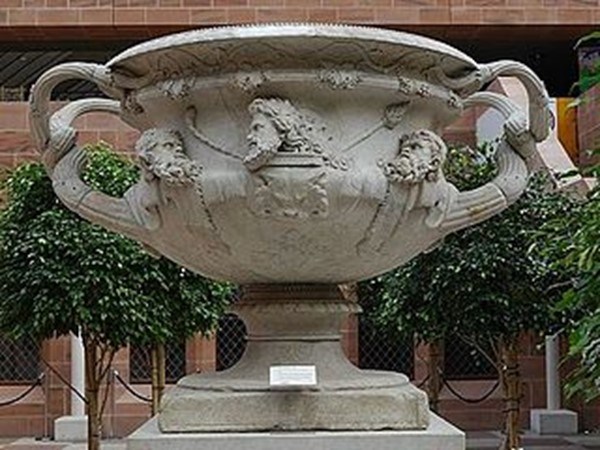
On display at the Burrell Collection near Glasgow
Son of Thomas Storr of Westminster, first silver-chaser later innkeeper, born 1771. Apprenticed c'1785. Before his first partnership with William Frisbee in 1792 he worked at Church Street, Soho, which was the address of Andrew Fogelberg. This is also the address at which Storr's first separate mark is also entered. First mark entered as plateworker, in partnership with William Frisbee, 2 May 1792. Address: 5 Cock Lane, Snow Hill. Second mark alone, 12 January 1793. Address: 30 Church Street, Soho. Third mark, 27 April 1793. Fourth 8 August 1794. Moved to 20 Air Street, 8 October 1796, (where Thomas Pitts had worked till 1793). Fifth mark, 29 November 1799. Sixth, 21 August 1807. Address 53 Dean Street, Soho. Seventh, 10 February 1808. Ninth, 21 October 1813. Tenth, 12 September 1817. Moved to Harrison Street, Gray's Inn Road, 4 March 1819, after severing his connection with Rundell, Bridge and Rundell. Eleventh mark, 2 September 1883. Address: 17 Harrison Street. Twelfth and last mark, 2 September 1833. Heal records him in partnership with Frisbee and alone at Cock Lane in 1792, and at the other addresses and dates above, except Harrison Street. Storr married in 1801, Elizabeth Susanna Beyer of the Saxon family of piano and organ builders of Compton Street, by whom he had ten children. He retired in 1838, to live in Hill House in Tooting. He died 18 March 1844 and is buried in Tooting Churchyard. His will, proved 3 April 1844, shows an estate of £3000. A memorial to him in Otely Church, Suffolk was put up by his son Francis the then incumbent of the parish. For full details of Storr's relationship with Rundell, Bridge and Rundell please see N.M. Penzer, 1954 or Royal Goldsmiths, The Art of Rundell and Bridge, 2005.
Storr's reputation rests on his mastery of the grandoise neo-Classical style developed in the Regency period. His early pieces up to about 1800 show restrained taste, although by 1797 he had produced the remarkable gold font for the Duke of Portland. Here, however the modelling of the classical figures must presumably have been the work of a professional sculptor, as yet unidentified, and many of the pieces produced by him for Rundell and Bridge in the Royal Collection must have sprung from designs commissioned by that firm rather than from his own invention. On the other hand, they still existed in his Harrison Street workshop, until destroyed in World War II, a group of Piranesi engravings of classical vases and monuments bearing his signature, presumably used as source material for designs. The massiveness of the best of his compositions is well shown in the fine urn of 1800 at Woborn Abbey, but the Theocritus Cup in the Royal Collection must be essentially ascribed to the restraint of its designer John Flaxman, while not denying to Storr its superb execution. Lord Spencer's ice pails of 1817 show similar quality. Not all Storr's work however was of classical inspiration. The candelabra of 1807 at Woburn derive from candlesticks by Paul Crespin of the George II period, formerly part of the Bedford Collection, and he attempted essays in floral rococo design from time to time, which tend to over-floridity. On occasions the excellence of his technical qualities was marred by a lack of good proportions, as in the chalices of the church plate of St Pancras, 1821. In spite of these small lapses there is no doubt that Storr rose to the demands made upon him as the author of more fine display plate than any other English goldsmith, including Paul De Lamerie, was ever called upon to produce.
You May Also Like






